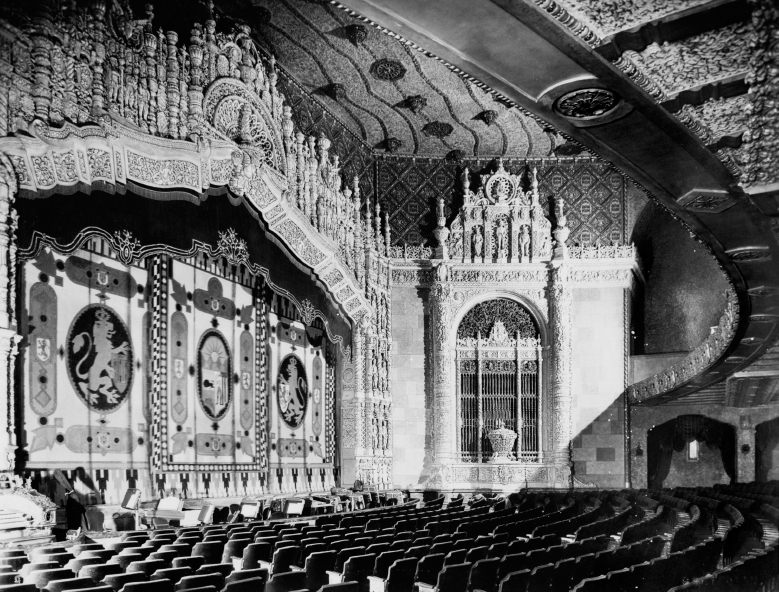Exhibition
Edison’s Trust attempted to monopolize exhibition by controlling the flow of films to theater owners. If theaters wanted to ensure they had films to show their patrons, they had to purchase a license from the Trust and pay whatever price it asked. Otherwise, they were locked out of the Trust and had to try to find enough films from independent producers to show. Eventually, the flow of films from independents in Hollywood and foreign films enabled theater owners to resist the Trust’s scheme.

After the collapse of the Trust, emerging studios in Hollywood had their own ideas on how to control exhibition. When industrious theater owners began forming film cooperatives to compete with block-booking tactics, producers like Zukor conspired to dominate exhibition by buying up theaters. By 1921, Zukor’s Paramount owned three hundred theaters, solidifying its ability to show the movies it produced. In 1925, a business merger between Paramount and Publix (then the country’s largest theater chain with more than five hundred screens) gave Zukor enormous influence over movie exhibition.
Zukor and the heads of several major studios understood that they did not have to own all the theaters to ensure that their movies were shown. Instead, the major studios (which would eventually include MGM, RKO, Warner Brothers, Twentieth Century Fox, and Paramount) only needed to own the first-run theaters (about 15 percent of the nation’s theaters), which premiered new films in major downtown areas in front of the largest audiences, and which generated 85 to 95 percent of all film revenue.

The studios quickly realized that to earn revenue from these first-run theaters they would have to draw the middle and upper-middle classes to the movies. To do so, they built movie palaces, full-time single-screen movie theaters that provided a more hospitable moviegoing environment. In 1914, the three-thousand-seat Strand Theatre, the first movie palace, opened in New York. With elaborate architecture, movie palaces lured spectators with an elegant décor usually reserved for high-society opera, ballet, symphony, and live theater.
Another major innovation in exhibition was the development of mid-city movie theaters. These movie theaters were built in convenient locations near urban mass transit stations to attract the business of the urban and suburban middle class (the first wave of middle-class people moved from urban centers to city outskirts in the 1920s). This idea continues today, as multiplexes featuring multiple screens lure middle-class crowds to interstate highway crossroads.
By the late 1920s, the major studios had clearly established vertical integration in the industry. What had once been a fairly easy and cheap business to enter was now complex and expensive. What had been many small competitive firms in the early 1900s now became a few powerful studios, including the Big Five—Paramount, MGM, Warner Brothers, Twentieth Century Fox, and RKO—and the Little Three (which did not own theaters)—Columbia, Universal, and United Artists. Together, these eight companies formed a powerful oligopoly, which made it increasingly difficult for independent companies to make, distribute, and exhibit commercial films.